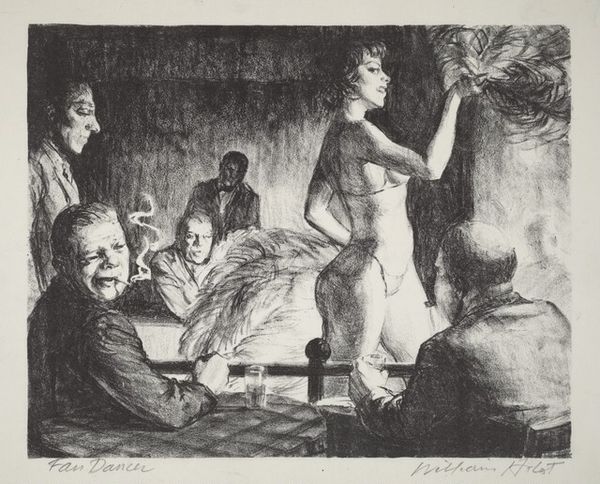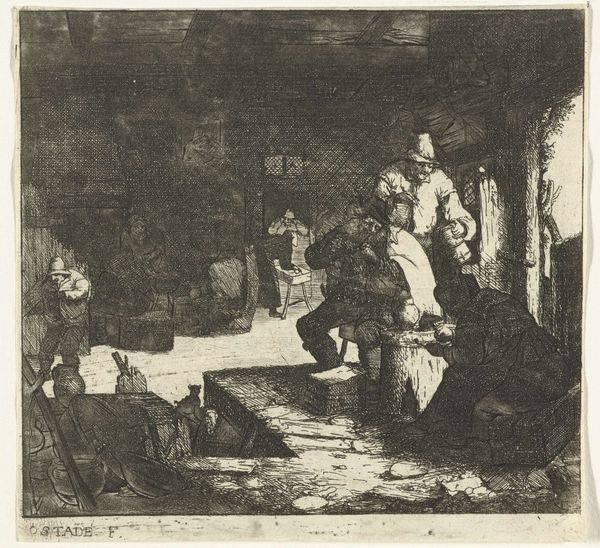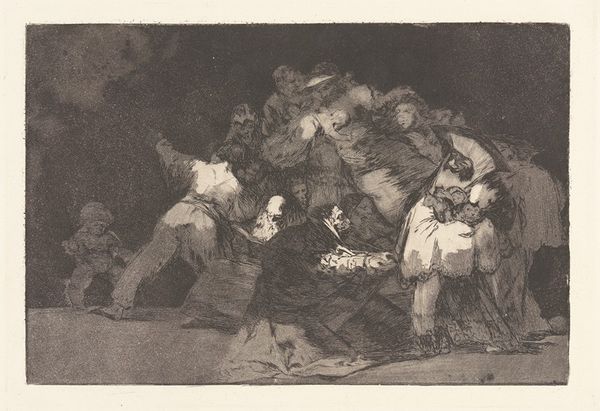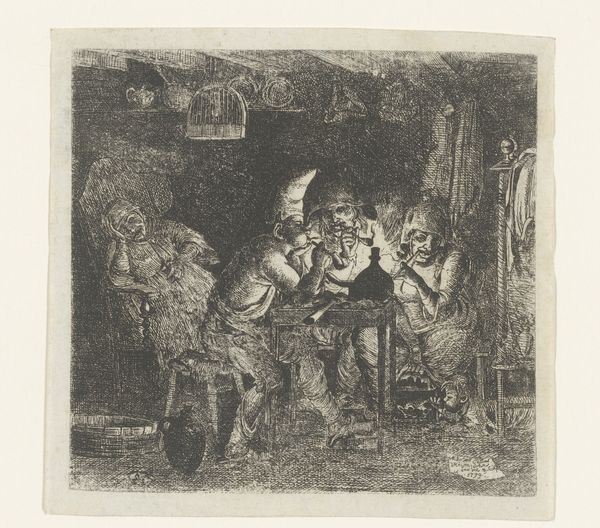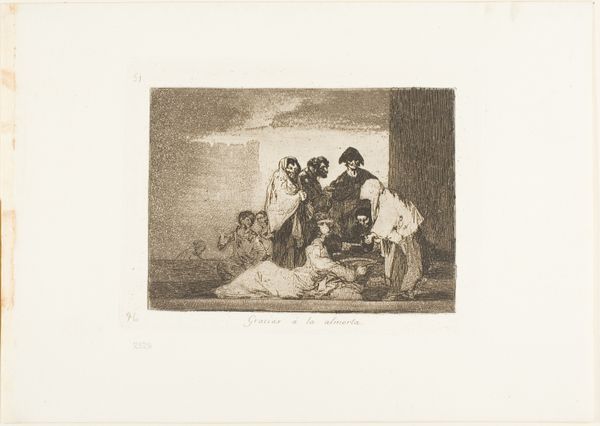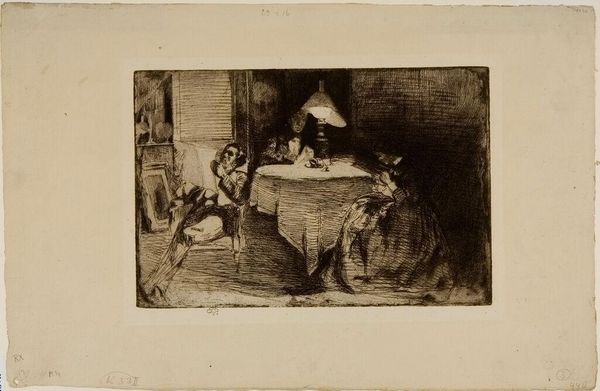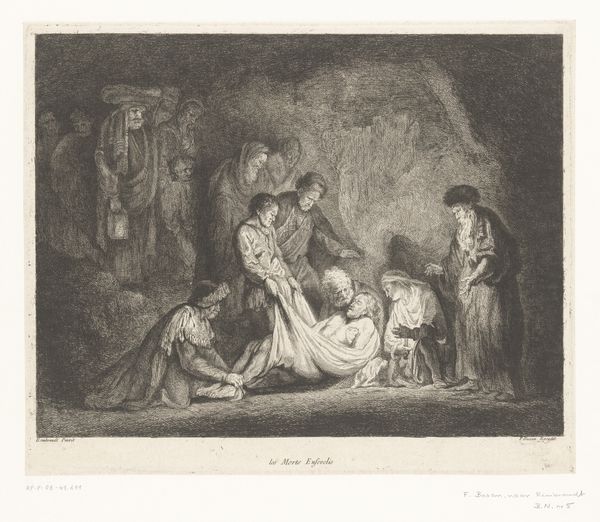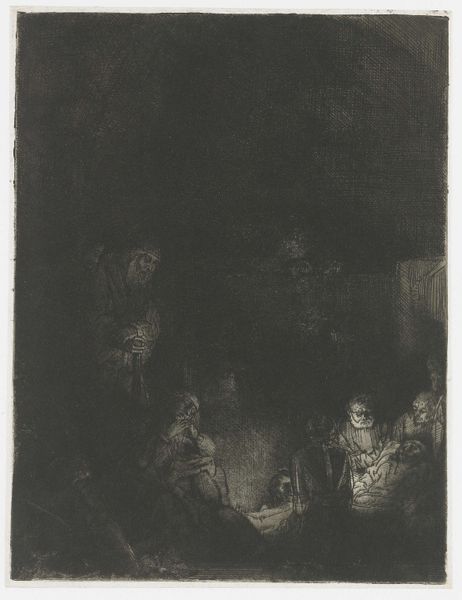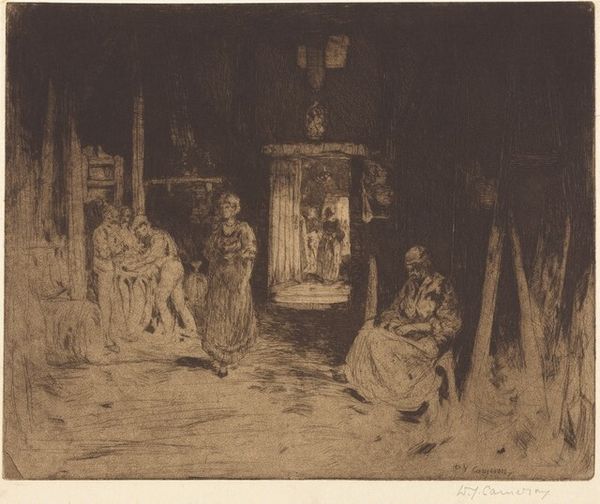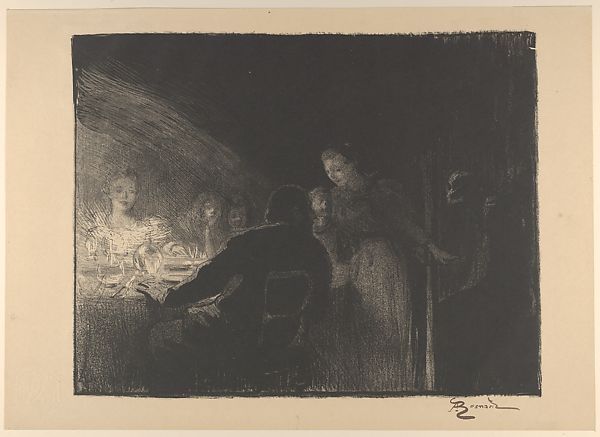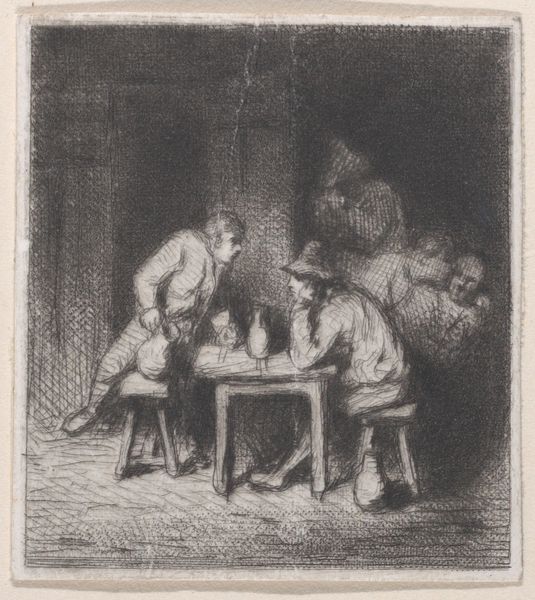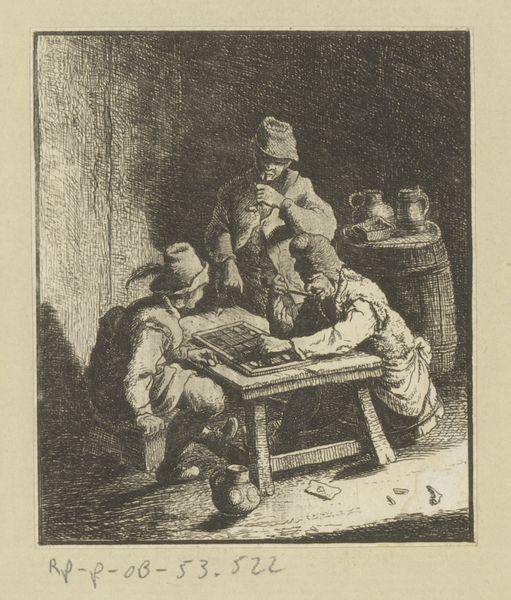
print, etching
#
pencil drawn
# print
#
etching
#
social-realism
#
genre-painting
#
realism
Dimensions: plate: 15 x 20 cm (5 7/8 x 7 7/8 in.) sheet: 20 x 29 cm (7 7/8 x 11 7/16 in.)
Copyright: National Gallery of Art: CC0 1.0
Curator: Seeing this etching, it’s hard not to immediately feel the oppressive atmosphere—the darkness, the tight grouping of the figures huddling around the meager fire. Editor: Indeed. This is “Cold,” created in 1936 by Blanche Grambs. An etching on paper, it powerfully exemplifies Social Realism during the Great Depression. We see figures desperately trying to ward off the cold in what seems to be a hopeless setting. Grambs’ work spoke directly to the economic disparities of the time. Curator: The gender dynamics here are so interesting. We are obviously dealing with what looks like unemployed working class individuals and families but one man sits apart. And it's difficult to read his expression – is it acceptance, resentment, grief? And, importantly, how do Grambs’ own perspectives and lived experiences as a woman impact this piece? Editor: That’s key to understanding Grambs. As a woman artist navigating the male-dominated art world while also keenly aware of social inequities, Grambs offers a poignant insider's view. I think, traditionally, social realism provides direct insight into moments like these. I do wonder if the men are sheltering others somehow? It looks dark. What are they warding off? Curator: It forces us to consider broader intersectional themes related to poverty, labor exploitation, and social neglect. The stark visual language creates an experience of alienation, highlighting how societal structures fail to protect the most vulnerable. Editor: And that stark visual language owes much to her use of etching. The lines feel almost like they're carved out of the darkness itself, emphasizing the hardship these people are facing. Her focus aligns with a generation of artists during this period invested in highlighting inequality and advocating for change through their work. Curator: Absolutely. We're drawn to consider both the visible elements and what the image actively conceals. The very ambiguity amplifies its impact. It’s a difficult moment frozen in time, encouraging deep reflections on social justice and our own place within those dynamics. Editor: Ultimately, this etching by Grambs provides both a window into history and also a mirror, reflecting our own ongoing struggle with social equality and economic justice. It's a conversation that art history is very eager to keep current.
Comments
No comments
Be the first to comment and join the conversation on the ultimate creative platform.
